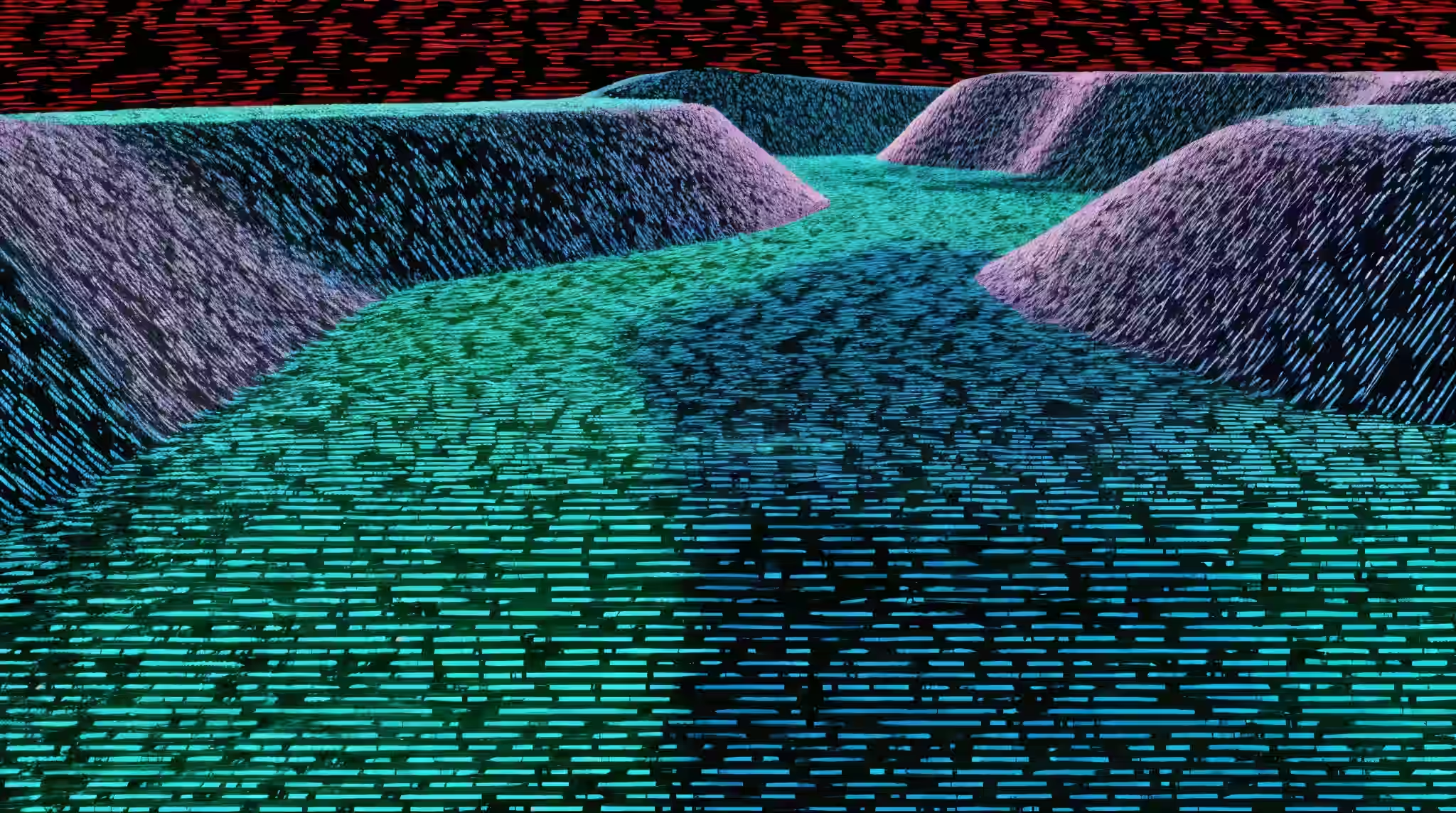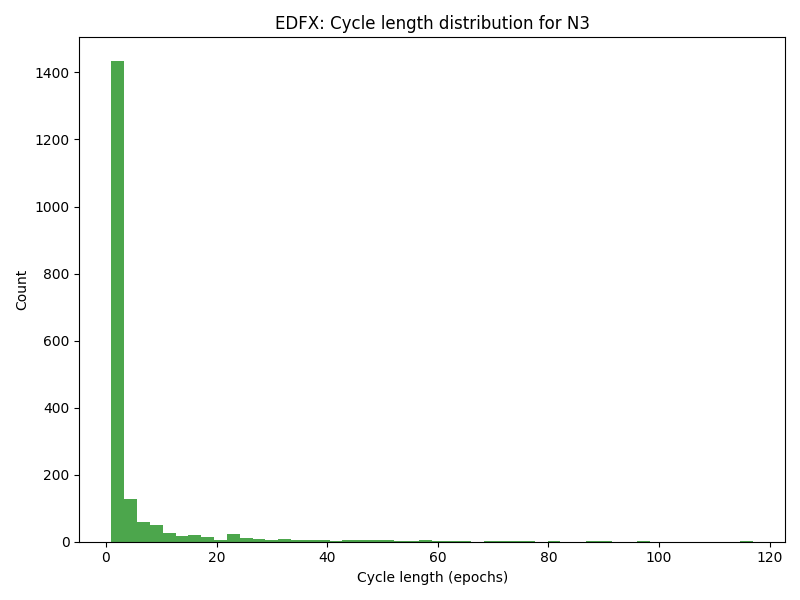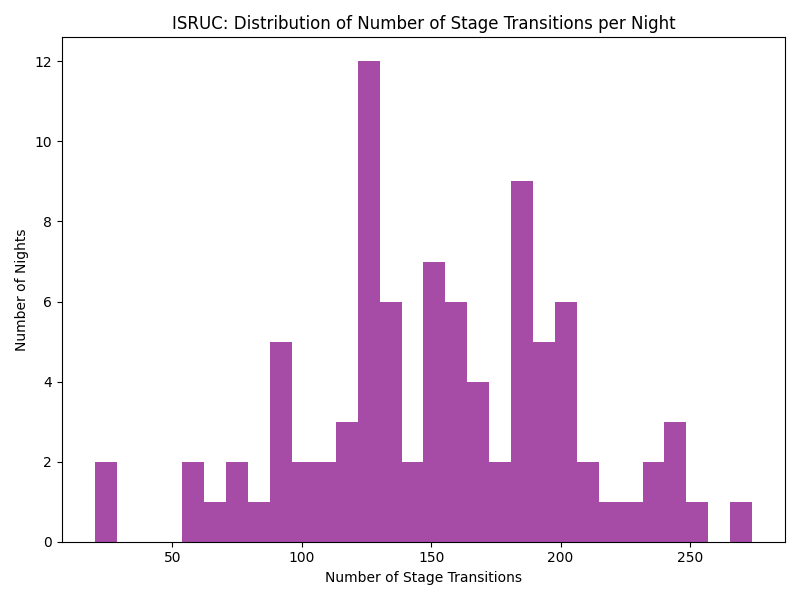
Fragmentation and statistics in sleep




You almost certainly recognize these timelines. They're officially called hypnograms and represent the sleep stages of one night.
But if I download hypnograms from the internet (Sleep EDFX/ISRUC) and analyze them, things look a bit different.

N3 lengths are only one or two epochs, much shorter than expected
An individual hypnogram fluctuates a lot

Reading the histogram: Most nights have >100 stage changes
What is this? Sleep fragmentation.
Hypnograms that your sleep tracker show you are rough approximations. We don't actually have rigid cycles where each one is just 3 stages - we drift through the different stages of sleep throughout the night. The most important part of this is N1.
N1 is an abbreviation of NREM 1, which is an abbreviation of Non REM 1, which is a special kind of sleep. It's typically grouped into light sleep, but it's actually lighter than light sleep. You almost always start with N1 before going into any other sleep stage for the night.

You can see from this matrix (Metzner) that you always start with N1, and most of the time start with N1 after being disturbed while sleeping. It also tells a different story though: one of N1 as a transitive phase.
In fact, the hypnograms say that you typically have 40 distinct N1 stages every night (around 30% of the average distinct stage count), even though N1 is typically just one or two minutes and only makes up around 10% of your sleep. (No distribution graphs since this blog has enough images as is.)
Maybe looking at some more hypnograms will help you understand the place of N1.

This hypnogram captures how humans sometimes randomly flip into N1. While sometimes it's related to falling back into sleep, other times it's just in the middle of light sleep.
I honestly don't know why we have N1 throughout the night. (Send me a message if you know, contacts are on the homepage.) But what I do know is that it breaks up your sleep in a way that sleep trackers don't tell you.
From the perspective of a sleep tracking company, it makes sense to ignore N1. It would have you believe that most REM and deep stages are under 10 minutes (my data did!), and fragments your data and models in other ways. And the amount of N1 sleep you get isn't something people track.
It doesn't quite sit right with me though. Your actual sleep is much more fragmented than your intuition or any sleep tracker would tell you, and you should know that.
Further reading: how it's hard to even guess hypnograms at a high level
Citing: Metzner, Claus & Schilling, Achim & Traxdorf, Maximilian & Schulze, Holger & Krauss, Patrick. (2021). Sleep as a random walk: a super-statistical analysis of EEG data across sleep stages. Communications Biology. 4. 1385. 10.1038/s42003-021-02912-6.